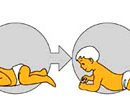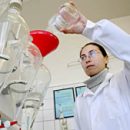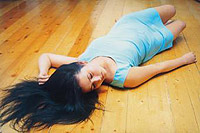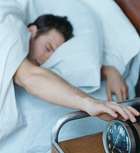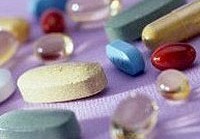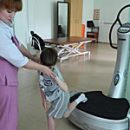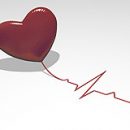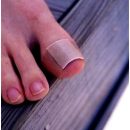Stroke competes with myocardial infarction for leadership in the list «murderers» people - they are «Responsible» more than half of all deaths.
Content
Consequences of a stroke Truly
catastrophic. Up to 85% of patients die or remain disabled, and only
about 10% of patients fully recovered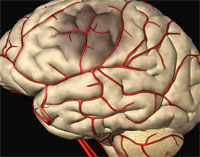 ÜT. At the same time, even among
ÜT. At the same time, even among
The surviving patients in 50% are re-stroke in the next 5 years
Life. After 55 years, the risk of a stroke increases twice
with an increase in age for every ten years.
What's happening?
Stroke arises when squeezed, blocking or breaking vessels, blood supply brain. Most of the strokes are ischemic.
By the mechanism of development, such a stroke is very similar to myocardial infarction
(In essence, it represents a brain infarction): atherosclerotic
The plaque in one of the brain arteries is destroyed, and in place
Damage is formed by blood clots — Thromb, which closes
clearance of vessel.
Brain cells lack oxygen,
And if neighboring arteries cannot take the blood supply to this area
on yourself, then in a few minutes they die.
Much less often
The clearance of the arteries is blocked by leaks of fat or air bubbles
(fat and air embolism), blood clots from the left ventricle of the heart, or
squeezed out from outside injury or tumor.
The cause of hemorogic
stroke is hemorrhage. This happens less often, but much more
life threatening. In this case, the wall breaks the defective
Arteries.
The reason can be aneurysm, or impaired integrity
vascular wall due to the same atherosclerosis, and provoking
factor — Enhance arterial pressure. As a result of blood
bottled on the brain fabric. Cells die from lack of oxygen,
And the flooded blood impresses and squeezes the neighboring fabrics,
interfering with normal operation.
The precursor of a stroke can be the transient brain circulation disorder, or transient ischemic attack
(TIA). It can occur in weeks or months to the present stroke.
This is «Little stroke», temporarily suspending blood circulation
in the brain. Due to the lack of blood, the brain can not normally
function.
TIA symptoms are very similar to stroke symptoms, however
Fully pass in 10-15 minutes. At this stage, the body is still
It is possible to quickly restore normal blood flow
And avoid irreparable.
Certain areas
The brain is responsible for the movement of hands, legs, speech, vision and t.NS. therefore
The effects of the stroke directly depends on which part of the brain
A catastrophe occurred. It may be paralysis (complete immobility)
or paresis (partial disruption of movements) hands or feet on the side,
The opposite of the lesion, serious violations of speech and letters,
Disorders P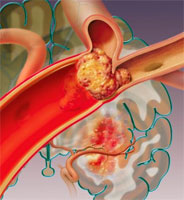 Amyat, sensitivity violation, etc.
Amyat, sensitivity violation, etc.
What is manifested?
Stroke most often happens early in the morning or late at night. Its first signs are:
- sudden numbness or weakness of the muscles of the face, hands or feet, especially on one side of the body;
- unexpected difficulties of articulation or perception of speech, text;
- sharp deterioration in view of one or both eyes;
- sudden disruption of coordination of movements, savory gait, dizziness;
- Sudden sharp and unexplainable headache.
How
The rule, these manifestations arise against the background of an enhancing arterial
Pressure. If you or a person near you have similar
Signs, immediately call an ambulance.
Remember that in this situation
Delay really «death like». Accurately describe the dispatcher
Everything that happened to arrive specialized neurological
Brigade.
Until the doctors arrived, put
Patient, Provide him full of peace and influx of fresh air. At
Admission to the clinic doctors estimate heart and respiratory
Activities provide the necessary emergency care. When
The need for a person is immediately sent to the neurorean compartment.
Diagnostics
First of all, doctors need to establish a type of stroke. To do this, conduct magnetic resonance
tomography of the brain (MRI), allowing to distinguish hemorrhagic
stroke from ischemic and exclude other diseases as well
Set the exact location and dimensions of the affected brain area.
After setting
Diagnostic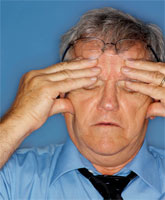 per «ischemic stroke» Conduct an ultrasound study
per «ischemic stroke» Conduct an ultrasound study
Neck and brain vessels, including duplex scanning, as well as
cerebral angiography and echocardiography. Additionally, maybe
We need to hold Halter monitoring (recording
Electrocardiograms during the day).
At
Diagnosis «Hemorrhagic stroke» To clarify the cause of hemorrhage
need cerebral angiography and doppler vascular
brain. If necessary, you may need to consult
Neurosurgeon.
Rehabilitation
At
Stroke in the brain formed a focus of dead nervous cells, position
and the size of which determine the degree of violation of a particular function.
And around and near him — Cells, as they say temporarily
Inactivated, «Inhibited». They need to return
activity.
There are those that were not previously involved
In ensuring movement, speech, however will be ready to rebuilt in this or that
take a different degree «duties» dead. «Teach»
to work in new conditions, thereby eliminating obstacles to
normal work of certain areas of the brain, it is possible only
With the help of various exercises. This is, first of all, is
The purpose of the rehabilitation of patients with stroke.
Recovery
Violated functions occurs slowly, so patients undergoing
stroke, require special attention and careful care.
Prevention
For
reducing the probability of a stroke, especially if you suffer from arterial
hypertension, regularly (twice a day!) Watch for arterial
Pressure. It's not so difficult at all: just you need to make the house tonometer
and learn to use it. It turned out that one measurement only
pressure and retention of it in normal can reduce the number of infarction
Myocardium for 19-21%, and the number of strokes to reduce by 43-45%!
In addition to
increased blood pressure, there is a whole group of factors
The risk of stroke, attention to which, it is quite possible, will extend your life,
And life is full.

